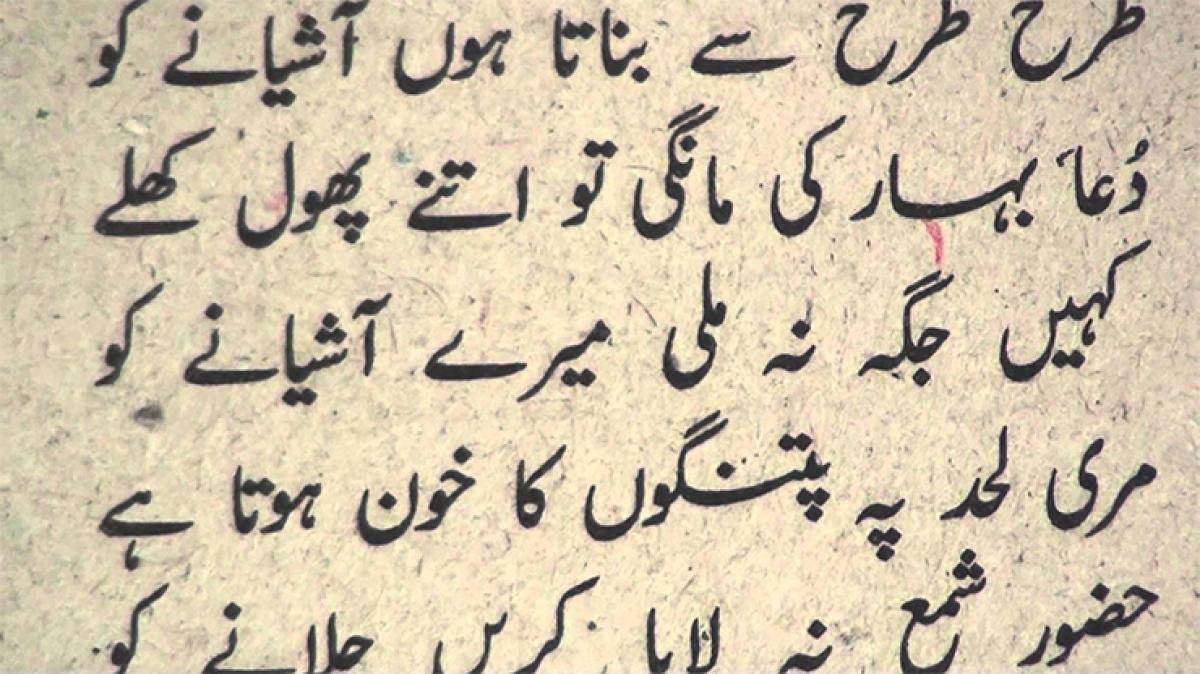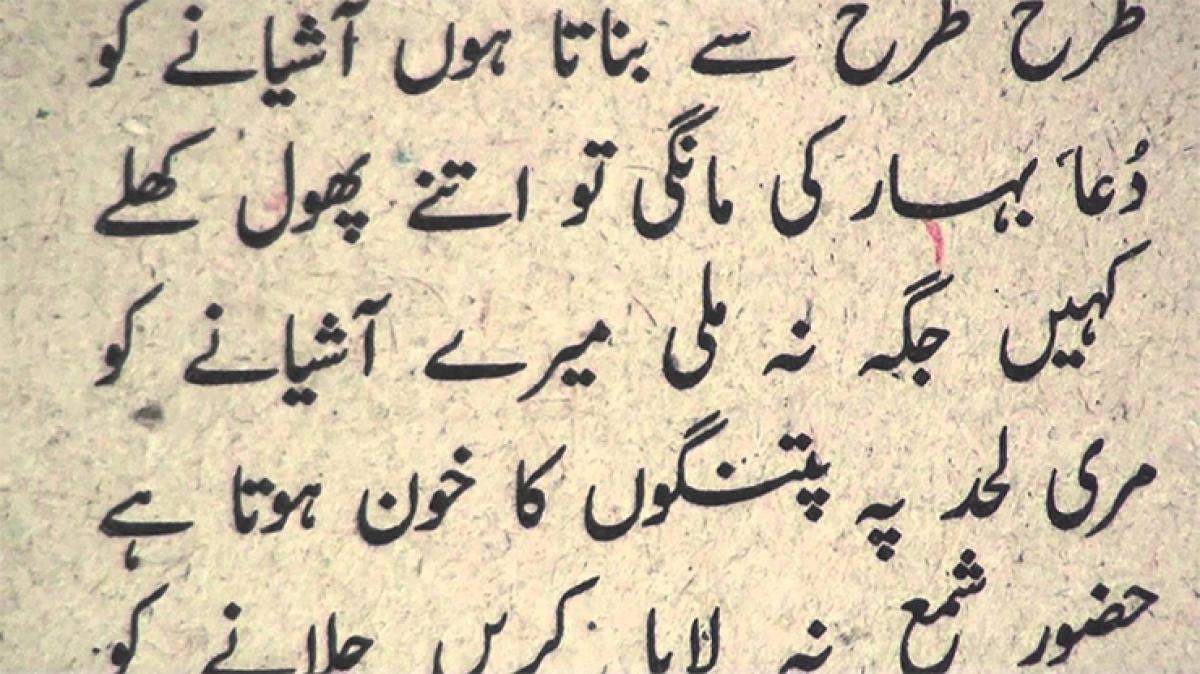Live
- Accompanied by EAM Jaishankar, diplomat-turned-politician Sandhu files nomination from Amritsar
- Scientists decode early metabolic changes that lead to autism
- Three dead as bus falls into river in Russia's St Petersburg
- I am ready to debate with PM Modi, but he will not do so: Rahul Gandhi
- Senthilkumar, Rathika to lead Indian squads at 22nd Asian Team Squash Championships
- Maharashtra: FIRs against state BJP chief Bawankule & LoP Wadettiwar for MCC violation
- In Telangana, PM Modi gives autograph on photo of girl who sang a song on him
- Petr Kratky extends his stay with Mumbai City FC till end of ISL 2024-25 season
- NSCN-IM warns of 'horrible human rights situation' if Naga political talks fail
- Let BJP win, save the nation: BJP MP candidate Potuganti Bharat Prasad
Just In

Richness of any culture can been seen and appreciated but when it comes to language and literature it is to be read and heard. We have to appreciate and take pride in this particular aspect of our culture. We must make it a point to read as many books writen during those times as it will help us to understand so many things that happened in those times.
Richness of any culture can been seen and appreciated but when it comes to language and literature it is to be read and heard. We have to appreciate and take pride in this particular aspect of our culture. We must make it a point to read as many books writen during those times as it will help us to understand so many things that happened in those times.
It will help us to read more books and become familiar with so many things that our happening around us today. In this lesson we will learn about the development of modern Indian languages and their literature. We will also read about the role played by the Christian missionaries in producing the earliest dictionaries and grammar of modern Indian languages and the manner in which these have helped in the growth of modern Indian literature.

Besides these, we shall also get to know the role of the Bhakti movement and nationalism in the development of modern Indian literature. North Indian Languages and literature We have already seen how languages evolved in India right upto the early medieval period. The old apabhramsha had taken new forms in some areas or was in the process of evolving into other forms.
These languages were evolving at two levels: the spoken and the written language. The old Brahmi script of the Ashoka days had undergone a great change. The alphabets during Ashoka’s period were uneven in size but by the time of Harsha, the letters had become of the same size and were regular, presenting the picture of a cultivated hand.
The studies have indicated that all the scripts of present northern Indian languages, except that of Urdu, have had their origin in old Brahmi. A long and slow process had given them this shape. If we compare the scripts of Gujarati, Hindi and Punjabi, we can easily understand this change. As for the spoken word, there are over 200 languages or dialects spoken in India at present.
Some are widely used while others are limited to a particular area. Out of all these, only twenty-two have found their way into our Constitution. A large number of people speak Hindi in its different forms that include Braj Bhasha, and Avadhi (spoken in Oudh region), Bhojpuri, Magadhi, and Maithili (spoken around Mithila), and Rajasthani and Khadi Boli (spoken around Delhi).
Rajasthani is another variant or dialect of Hindi. This classification has been made on the basis of literature produced by great poets over a length of time. Thus, the language used by Surdas and Bihari has been given the name of Braj Bhasha; that used by Tulsidas in the Ramacharitamanasa is called Avadhi and the one used by Vidyapati has been termed as Maithili.
But Hindi, as we know it today is the one called Khadi Boli. Though Khusrau has used Khadi Boli in his compositions in the thirteenth century its extensive use in literature began only in the nineteenth century. It even shows some influence of Urdu.
Persian and Urdu
Urdu emerged as an independent langauge towards the end of the 4th century AD. Arabic and Persian were introduced in India with the coming of the Turks and the Mongols. Persian remained the court langage for many centuries. Urdu as a language was born out of the interaction between Hindi and Persian. After the conquest of Delhi (1192), the Turkish people settled in this region.
Urdu was born out of the interaction of these settlers and soldiers in the barracks with the common people. Originally it was a dialect but slowly it acquired all the features of a formal language when the authors started using Persian script. It was further given an impetus by its use in Bahamani states of Ahmadnagar, Golkunda, Bijapur and Berar. Here it was even called dakshini or daccani (southern). As time passed, it became popular with the masses of Delhi.
Urdu became more popular in the early eighteenth century. People even wrote accounts of later Mughals in Urdu. Gradually it achieved a status where literature-both poetry and prose-started being composed in it. The last Mughal Emperor Bahadur Shah Zafar wrote poetry in it. Some of his couplets have become quite well known in the Hindi and Urdu speaking areas. Urdu was given its pride of place by a large number of poets who have left inimitable poetry for posterity.
The earliest Urdu poet is supposed to be Khusrau (1253-1325). He started writing as a poet in the reign of Sultan Balban and was a follower of Nizam ud-din Auliya. He is said to have composed ninty-nine works on separate themes and numerous verses of poetry. Among the important works composed by him are Laila Majnun and Ayina-I-Sikandari dedicated to Alau-din-Khalji. Among other well-known poets are Ghalib, Zauq, and Iqbal. Iqbal’s Urdu poetry is available in his collection called Bang- i - dara.
His Sarejahan se achcha Hindostan hamara is sung and played at many of the national celebrations in India. No army parade is considered complete without the army band playing this tune. In big Indian cities like Delhi these are many programmes in which famous singers are invited to sing nazams or Ghazals written by famous poets like Ghalib, Maum, Bulley Shah, Waris Shah besides many others. So you can imagine how rich our language and literary culture must have been to continue till today.
It has enriched our lives and is central to people meeting and intermingling with each other. Among the best prose writers were people like Pandit Ratan Nath Sarshar, who wrote the famous Fasanah- i-Azad. Even in the early days, Munshi Prem Chand, who is supposed to be a doyen of Hindi literature, wrote in Urdu. Urdu has given us a new form of poem that is called a nazm.
Urdu was patronised by the Nawabs of Lucknow, who held symposiums in this language. Slowly it became quite popular. Pakistan has adopted Urdu as the state language. As Persian was the language of the court, much of the literature produced in this period was written in Persian. Amir Khusrau and Amir Hasan Dehelvi wrote superb poetry in Persian.
Historians like Minhas-us-Siraj and Zia Barani and Ibn Batuta who came to India during those days wrote accounts of rulers, important political events and incidents in this language. In the medieval period, Persian was adopted as the court language.Several historical accounts, administrative manuals and allied literature in this language have come down to us. The mughal rulers were great patrons of leaning and literature.
Babar wrote his tuzuk (autobiography) in Turkish language, but his grandson Akbar got it translated into Persian. Akbar patronized many scholars. He got Mahabharata translated into Persian. Jahangir’s autobiography (Tuzuk-i-Jahangiri) is in Persian and is a unique piece of literature. It is said that Noorjahan was an accomplished Persian poetess. Quite a fair amount of Persian literature has been produced by the courtiers of the Mughals.
Abul Fazl’s Akbarnamah and Ain-e-Akbari is a fine piece of literature. From there we get a good deal of information about Akbar and his times. Faizi wrote beautiful Persian poetry. Several collections of letters of the Mughal period (insha) have come down to us. Besides shedding light on Mughal history, they indicate different styles of letter writing. Another name in prose and history writing is that of Chandra Bhan, a writer of Shahjahan’s days.
Similarly, we have a work named Tabqat-i-Alamgïri, shedding light on Aurangzeb. Badauni was another writer who belonged during Akbar’s time. In the twentieth century, Iqbal wrote good Persian poetry. All this has now become a part of Indian heritage and culture

© 2024 Hyderabad Media House Limited/The Hans India. All rights reserved. Powered by hocalwire.com







